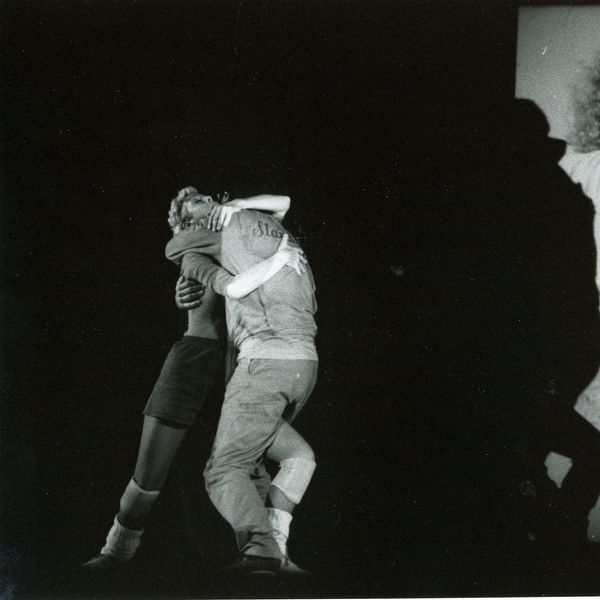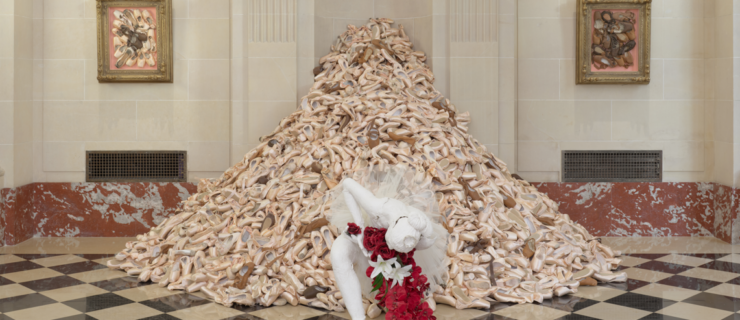David Gordon's Archival Fun House
Stepping into the David Gordon exhibit at the New York Public Library for the Performing Arts is like crawling into the attic of an unstoppably lively mind. The renowned postmodern choreographer (and playwright) has loaned hundreds of objects for the exhibit, called “David Gordon: Archiveography – Under Construction.” Photos, props, videos and costumes from the last 54 years are crammed into the Vincent Astor Gallery with no space between things. No preciousness or grandeur here; as with the 1960s aesthetic that Gordon has built on, it’s a kind of celebration of the ordinary—with the special Gordon wit and playfulness sprinkled throughout. You’ll see things from five decades all at once.
Two fun facts: David and his wife Valda Setterfield got married January 28, 1961, only eight days after John F. Kennedy was inaugurated. Their son Ain was born July 4, 1962, just two days before the launch of the notoriously groundbreaking Judson Dance Theater (of which Gordon was a founding member).
The great constant in this zany but rich travelogue is Setterfield, Gordon’s wife and muse. Of course, many other excellent dancers have performed the wide variety of his oeuvre. There has been choreography with chairs, choreography with arguments, choreography with scripts, choreography with Mikhail Baryshnikov. Searching for these things in the exhibit can be like going on a treasure hunt.
You’ll see props that have been recycled in many productions—things like rolling ladders, rubber balls, cardboard doors, stuffed dummies and folding chairs—all artfully stashed in this attic archive. You’ll learn which costumes were bought at Macy’s or Daffy’s or Century 21 or a thrift store, and which ones were designed by the likes of Santo Loquasto. For which performance did David Gordon wear lamé overalls? When did Setterfield wear silk? Why did Gordon wear a bloody lab coat for his first piece at Judson Church? How many Duchamp references can you find in the show?
Video of Valda and David embedded in the exhibit.
If you can’t make it to the Library before April 6, when the show closes, check this example of a funny feisty family album.
But do visit the exhibit—and bring a friend or relative of any age. You will both walk away feeling that a flood of creativity has washed over you. Archiveography reflects Gordon’s prolificness, his stubbornness, and yes, the grandeur of his work over time. And this is only Part I! When completed, the multiyear project will be donated to the Jerome Robbins Dance Division of the Library, which is always worth a visit.




